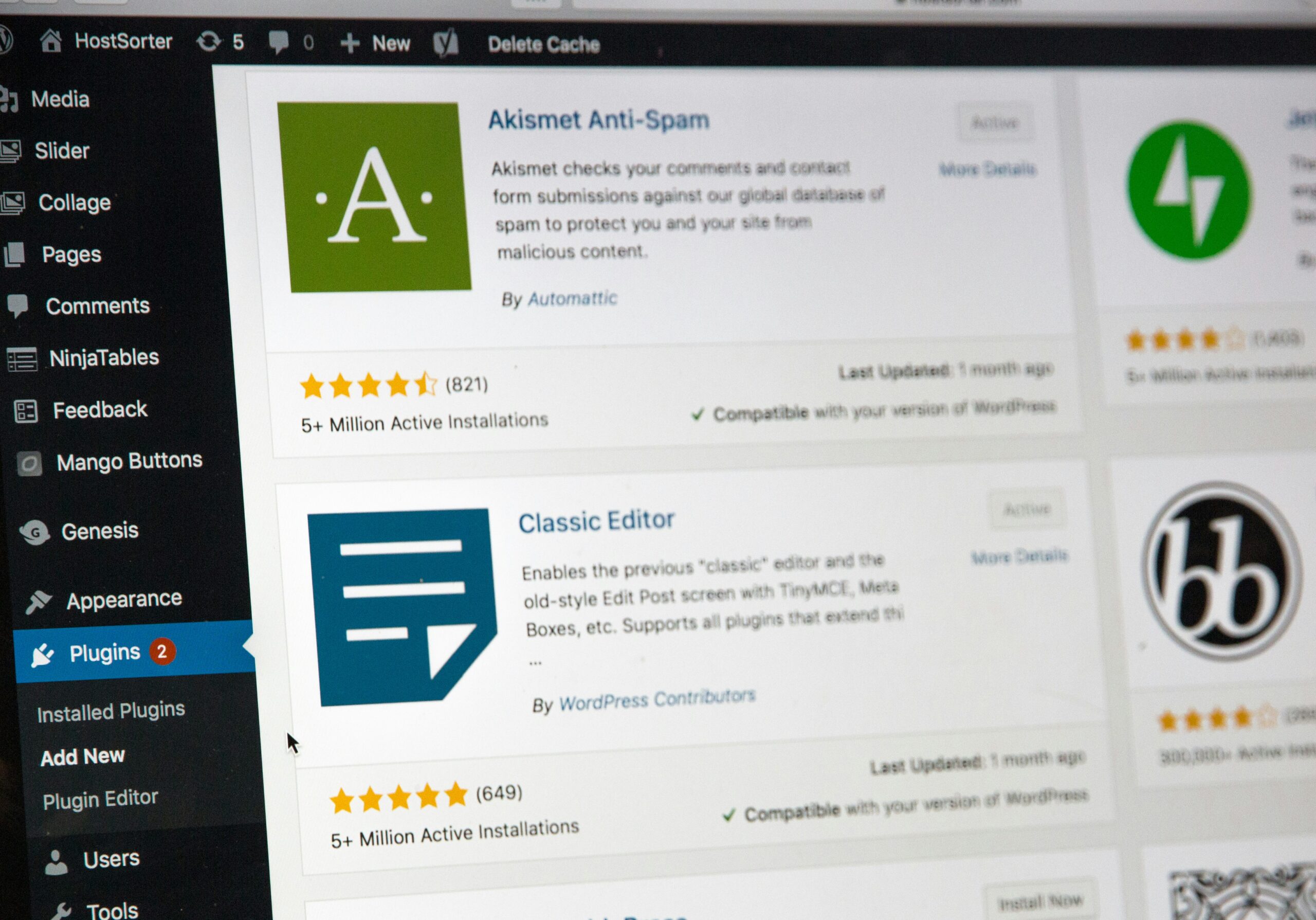
Unlocking the Power of On-Page SEO: Your Gateway to Online Visibility
In the ever-evolving world of digital marketing, having a strong online presence is more critical than ever. Did you know that 93% of online experiences begin with a search engine? This statistic underscores the importance of search engine optimization (SEO) in driving traffic to your website. SEO isn’t just a buzzword; it’s a necessity for anyone looking to thrive in the digital marketplace.
Overview
SEO is a broad term that encompasses various strategies to improve your website’s visibility on search engines like Google. These strategies are generally divided into three main categories: on-page SEO, off-page SEO, and technical SEO. On-page SEO focuses on optimizing individual web pages to rank higher and earn more relevant traffic. Unlike off-page SEO, which involves external factors like backlinks, and technical SEO, which deals with the backend structure of your site, on-page SEO is entirely within your control and involves the content and HTML source code of a page.
Post Purpose
This post aims to provide you with a comprehensive understanding of on-page SEO, breaking down its key components and demonstrating how you can implement these strategies to enhance your website’s performance. By the end of this post, you’ll have a clear roadmap to optimize your web pages effectively, ensuring they meet search engine criteria and provide a better user experience. Whether you’re a seasoned marketer or a beginner, this guide will equip you with the knowledge to boost your website’s visibility and drive more organic traffic.

Demystifying On-Page SEO: The Key to Higher Search Engine Rankings
In the realm of digital marketing, on-page SEO is an indispensable strategy that ensures your website is not only visible to search engines but also appealing to users. By focusing on optimizing the elements within your control on each webpage, you can significantly enhance your site’s performance in search engine results. Let’s dive into the key aspects of on-page SEO and understand how it can transform your website’s visibility and effectiveness.
Understanding On-Page SEO: The Fundamentals of Page-Level Optimization
SEO is a broad term that encompasses various strategies to improve your website’s visibility on search engines like Google. These strategies are generally divided into three main categories: on-page SEO, off-page SEO, and technical SEO. On-page SEO focuses on optimizing individual web pages to rank higher and earn more relevant traffic. Unlike off-page SEO, which involves external factors like backlinks, and technical SEO, which deals with the backend structure of your site, on-page SEO is entirely within your control and involves the content and HTML source code of a page.
The Vital Role of On-Page SEO: Enhancing Visibility and User Experience
SEO is a broad term that encompasses various strategies to improve your website’s visibility on search engines like Google. These strategies are generally divided into three main categories: on-page SEO, off-page SEO, and technical SEO. On-page SEO focuses on optimizing individual web pages to rank higher and earn more relevant traffic. Unlike off-page SEO, which involves external factors like backlinks, and technical SEO, which deals with the backend structure of your site, on-page SEO is entirely within your control and involves the content and HTML source code of a page.
On-Page SEO vs. Off-Page and Technical SEO: Building a Strong Foundation
SEO is a broad term that encompasses various strategies to improve your website’s visibility on search engines like Google. These strategies are generally divided into three main categories: on-page SEO, off-page SEO, and technical SEO. On-page SEO focuses on optimizing individual web pages to rank higher and earn more relevant traffic. Unlike off-page SEO, which involves external factors like backlinks, and technical SEO, which deals with the backend structure of your site, on-page SEO is entirely within your control and involves the content and HTML source code of a page.

Key Elements of On-Page SEO: A Comprehensive Guide to Boosting Your Website's Performance
To elevate your website’s search engine rankings and improve user experience, mastering on-page SEO is essential. On-page SEO involves optimizing various aspects of your web pages that are within your control. By fine-tuning these elements, you can ensure that your content is both search engine-friendly and engaging for your audience. Below, we delve into the critical components of on-page SEO and provide actionable tips to optimize each one effectively.
Title Tags
Definition and Role in SEO: Title tags are HTML elements that specify the title of a web page. They appear in search engine results as the clickable headline for a given result and are crucial for usability, SEO, and social sharing.
Best Practices for Creating Effective Title Tags :
- Keep it Concise: Aim for 50-60 characters to ensure the entire title is visible in search results.
- Include Primary Keywords: Place your main keyword near the beginning of the title tag.
- Make it Descriptive and Engaging: Clearly describe the content of the page while making it enticing for users to click.
- Avoid Keyword Stuffing: Use keywords naturally without overloading the title with them.
Meta Descriptions
What They Are and Why They Matter: Meta descriptions are brief summaries that appear below the title tag in search engine results. While they don’t directly affect rankings, they influence click-through rates (CTR).
How to Write Compelling Meta Descriptions:
- Keep it Brief and Relevant: Limit meta descriptions to 150-160 characters and ensure they accurately represent the page content.
- Incorporate Keywords: Include primary and secondary keywords naturally.
- Use a Call to Action (CTA): Encourage users to click with phrases like “Learn more,” “Get started,” or “Discover how.”
- Highlight Unique Selling Points (USPs): Mention any special offers, unique features, or benefits to entice clicks.
Headings (H1, H2, H3, etc.)
Importance of Structured Headings: Headings organize content, making it easier for users and search engines to understand the page’s structure and hierarchy.
Tips for Optimizing Headings for SEO:
- Use One H1 Tag per Page: The H1 should represent the main topic of the page.
- Incorporate Keywords: Use primary keywords in your headings naturally.
- Maintain a Logical Hierarchy: Use H2, H3, and subsequent tags to break down the content into sections and subsections.
- Keep Headings Concise and Descriptive: Ensure they are clear and provide an accurate overview of the content that follows.
URL Structure
Importance of Clean and Descriptive URLs: URLs that are easy to read and include relevant keywords help search engines and users understand the page content.
How to Optimize URLs for Better Search Visibility:
- Use Keywords: Incorporate primary keywords in the URL.
- Keep it Short and Simple: Avoid long, complex URLs. Aim for brevity and clarity.
- Use Hyphens to Separate Words: Avoid underscores and use hyphens to improve readability.
- Ensure Consistency: Maintain a consistent URL structure across your website.
Content Quality
Importance of High-Quality, relevant Content: Content is the core of on-page SEO. High-quality content attracts and retains visitors, encourages sharing, and signals relevance to search engines.
Best Practices for Creating SEO-Friendly Content:
- Conduct Keyword Research: Identify relevant keywords with good search volume and integrate them naturally into your content.
- Write for Humans First: Ensure the content is engaging, informative, and valuable to your audience.
- Use a Clear Structure: Organize content with headings, bullet points, and short paragraphs for better readability.
- Update Regularly: Keep content fresh and up-to-date to maintain relevance.
Image Optimization
Role of Images in On-Page SEO: Images enhance user experience and engagement, but they need to be optimized to avoid slowing down your site.
Tips for Optimizing Images:
Use Descriptive Filenames: Rename image files with relevant keywords before uploading.
- Include Alt Text: Provide descriptive alt text for each image, incorporating keywords naturally.
- Compress Images: Reduce file size without compromising quality to improve load times.
- Use Appropriate Formats: Choose the right image format (JPEG, PNG, SVG) based on the image type and use case.
Internal Linking
Importance of Internal Links for SEO: Internal links help distribute link equity throughout your site, improve crawlability, and guide users to related content.
Best Practices for Creating an Effective Internal Linking Strategy:
- Use Descriptive Anchor Text: Ensure the anchor text is relevant and descriptive of the linked content.
- Link to Relevant Pages: Connect related content to enhance user experience and provide additional value.
- Avoid Overlinking: Keep the number of internal links reasonable to maintain content readability.
Mobile-Friendliness
Impact of Mobile Usability on SEO: With most searches now happening on mobile devices, ensuring your site is mobile-friendly is crucial for SEO.
Tips for Ensuring a Mobile-Friendly Website:
- Use Responsive Design: Ensure your site adjusts seamlessly to different screen sizes.
- Optimize for Touch: Make sure buttons and links are easily clickable on touchscreens.
- Test Mobile Performance: Use tools like Google’s Mobile-Friendly Test to check and improve mobile usability.
Page Speed
Importance of Page Loading Speed: Faster-loading pages provide a better user experience and can lead to higher search engine rankings.
Tools and Tips for Optimizing Page Speed:
- Use Tools Like Google PageSpeed Insights: Identify areas for improvement.
- Enable Compression: Compress files to reduce load times.
- Minimize HTTP Requests: Reduce the number of elements on a page to speed up load times.
- Optimize Images and Code: Compress images and minify CSS, JavaScript, and HTML.
User Experience (UX)
How UX Affects SEO: Good UX ensures that visitors have a positive interaction with your site, which can reduce bounce rates and increase time on site.
Tools and Tips for Optimizing Page Speed:
- Use Tools Like Google PageSpeed Insights: Identify areas for improvement.
- Enable Compression: Compress files to reduce load times.
- Minimize HTTP Requests: Reduce the number of elements on a page to speed up load times.
- Optimize Images and Code: Compress images and minify CSS, JavaScript, and HTML.
How to Implement On-Page SEO
Understanding the principles of on-page SEO is only the first step towards enhancing your website’s search engine performance. The real challenge lies in effectively implementing these strategies. From keyword research to optimizing content and ensuring a seamless user experience, each element plays a vital role in improving your site’s visibility and ranking. In this section, we’ll provide a step-by-step guide to help you apply on-page SEO techniques efficiently. Whether you’re just starting out or looking to refine your existing practices, these actionable steps and recommended tools will set you on the path to SEO success.
Step-by-Step Guide on How to Implement On-Page SEO
Scenario: A WooCommerce store owner wants to enhance their marketing efforts by sending personalized promotional emails to customers immediately after they make a purchase.
Solution: Using the WooCommerce Zapier integration, the store owner can set up a zap that automatically exports new order details to a marketing automation tool like Mailchimp. This integration allows for real-time syncing of customer and order information, enabling the sending of personalized emails based on recent purchases, which can improve customer engagement and repeat business.
Step One: Conduct Keyword Research
- Identify Primary Keywords: Use tools like Google Keyword Planner, Ahrefs, or SEMrush to find relevant keywords with high search volume and low competition.
- Select Secondary Keywords: Choose related keywords to support the primary keyword.
Step Two: Optimize Title Tags
- Include Primary Keywords: Ensure your primary keyword is at the beginning of the title.
- Keep It Concise and Descriptive: Aim for 50-60 characters.
- Create Unique Titles: Each page should have a unique title that accurately describes its content.
Step Three: Compelling Meta Descriptions
- Summarize the Content: Clearly describe what the page is about.
- Use Keywords: Integrate primary and secondary keywords naturally.
- Incorporate a Call to Action: Encourage clicks with phrases like “Learn more” or “Discover now.”
Step Four: Structure Content with Headings
- Use One H1 Tag: Ensure it includes the primary keyword and accurately reflects the page’s topic.
- Organize Content with H2 and H3 Tags: Break down content into sections and subsections for readability and SEO.
Step Five: Optimize URL Structure
- Include Keywords: Make URLs short, descriptive, and keyword-rich.
- Use Hyphens: Separate words with hyphens for better readability.
Step Six: Enhance Content Quality
- Write for the Audience: Focus on providing value and answering users’ queries.
- Integrate Keywords Naturally: Avoid keyword stuffing.
- Update Regularly: Keep content current and relevant.
Step Seven: Optimize Images
- Use Descriptive Filenames and Alt Text: Include keywords in filenames and alt text.
- Compress Images: Reduce file size for faster loading times.
Step Eight: Implement Internal Linking
- Use Relevant Anchor Text: Link to related content using descriptive anchor text.
- Create a Logical Structure: Ensure internal links guide users through relevant and related content.
Step Nine: Ensure Mobile-Friendliness
- Responsive Design: Use responsive design to ensure your site works well on all devices.
- Test Mobile Usability: Use Google’s Mobile-Friendly Test to identify and fix issues.
Step Ten: Improve Page Speed
- Enable Compression and Caching: Use tools like Gzip and browser caching to reduce load times.
- Minify CSS, JavaScript, and HTML: Remove unnecessary code to speed up your site.
Tools and Resources:
- Yoast SEO: A WordPress plugin that helps optimize content for SEO.
- Google Search Console: Provides insights and tools to help improve your site’s SEO performance.
- Google Analytics: Tracks and reports website traffic and user behavior.
- Ahrefs/SEMrush: Offers comprehensive SEO tools for keyword research, site audits, and competitor analysis.
Common On-Page SEO Mistakes to Avoid
While on-page SEO is critical for improving your website’s search engine ranking and user experience, even the best strategies can fall short if common mistakes are made. Many websites suffer from errors that can be easily avoided with a little attention to detail and best practices. In this section, we’ll highlight some of the most frequent on-page SEO mistakes and provide practical tips on how to avoid them. By understanding and addressing these pitfalls, you can ensure your website is optimized for both search engines and users, paving the way for better visibility and performance.
List of Common Mistakes:
- Keyword Stuffing: Overloading content with keywords in an unnatural manner.
- Duplicate Content: Having identical or very similar content across multiple pages.
- Ignoring Mobile Optimization: Failing to ensure the site is mobile-friendly.
- Slow Page Load Times: Neglecting to optimize site speed.
- Poorly Written Content: Creating content that is not valuable or engaging for users.
- Missing Alt Text for Images: Not providing descriptive alt text for images.
- Broken Links: Having internal or external links that lead to non-existent pages.
- Ignoring Meta Descriptions: Not writing unique meta descriptions for each page.
- Unclear URL Structure: Using long, complex, or non-descriptive URLs.
- Lack of Internal Linking: Failing to create a logical structure of internal links.
Tips for Avoidance:
- Use Keywords Naturally: Integrate keywords in a way that reads naturally and makes sense to users.
- Create Unique, High-Quality Content: Ensure each page has unique and valuable content.
- Optimize for Mobile: Use responsive design and test your site’s mobile performance regularly.
- Improve Load Times: Use tools like Google PageSpeed Insights to identify and fix issues.
- Focus on User Experience: Write clear, engaging, and informative content.
- Include Alt Text for Images: Always provide descriptive alt text for better accessibility and SEO.
- Regularly Check for Broken Links: Use tools to identify and fix broken links promptly.
- Write Compelling Meta Descriptions: Summarize the page content effectively and include a call to action.
- Simplify URL Structure: Make URLs short, descriptive, and keyword-rich.
- Implement a Strong Internal Linking Strategy: Use internal links to guide users through related content logically.
Measuring On-Page SEO Success
Implementing on-page SEO strategies is just the beginning of improving your website’s visibility and performance. To ensure your efforts are effective, it’s essential to measure and analyze your results. Tracking key metrics will help you understand how well your optimizations are working and where there is room for improvement. In this section, we’ll explore the most important metrics to monitor and the tools you can use to measure your on-page SEO success. By keeping a close eye on these indicators, you can make informed decisions to continually enhance your site’s SEO and user experience.
Key Metrics:
- Organic Traffic: The number of visitors coming to your site from search engines.
- Bounce Rate: The percentage of visitors who leave after viewing only one page.
- Average Session Duration: The average amount of time users spends on your site.
- Pages per Session: The average number of pages viewed during a session.
- Click-Through Rate (CTR): The percentage of users who click on your link in search results.
- Conversion Rate: The percentage of visitors who complete a desired action (e.g., making a purchase, filling out a form).
Tools for Measurement:
- Google Analytics: Offers detailed insights into website traffic, user behavior, and conversion tracking.
- Google Search Console: Provides data on search performance, including clicks, impressions, CTR, and average position.
- Ahrefs/SEMrush: Track keyword rankings, analyze backlinks, and monitor overall site performance.
- Hotjar: Visualizes user behavior with heatmaps and session recordings to identify UX issues and areas for improvement.
- Pingdom/GTmetrix: Analyze and monitor page speed and performance to ensure a fast and efficient user experience.
Elevate Your Website with Effective On-Page SEO
Implementing on-page SEO is a multifaceted process that involves optimizing various elements on your website, from keyword research and title tags to content quality and mobile-friendliness. Each step is crucial in improving your site’s visibility, user experience, and overall search engine ranking.
Start applying these on-page SEO techniques to your website today. Use the tools and tips provided to ensure each element is optimized for both search engines and users.
Have you tried any of these on-page SEO strategies? Share your experiences or ask any questions in the comments below. Let’s learn and improve together!
Frequently Asked Questions About On-Page Search Engine Optimization
To help you better understand and implement on-page SEO strategies, we’ve compiled a list of frequently asked questions. These answers will address common concerns and provide additional insights to enhance your SEO efforts.
What is the most important aspect of on-page SEO?
While all elements are crucial, high-quality, relevant content is the cornerstone of effective on-page SEO. It directly impacts user engagement and search engine rankings.
How often should I update my website's content for SEO?
Regular updates are essential. Aim to refresh your content every few months to keep it relevant and aligned with current SEO best practices and user interests.
Can I use the same keywords on multiple pages?
It’s best to avoid keyword cannibalization by using unique primary keywords for each page. However, related secondary keywords can be used across multiple pages to maintain relevance.
How do I check if my website is mobile-friendly?
Use Google’s Mobile-Friendly Test tool to analyze your website’s mobile usability. It will provide insights and suggestions for improving the mobile experience.
What tools can help me with on-page SEO?
Tools like Yoast SEO, Google Analytics, Google Search Console, Ahrefs, and SEMrush are invaluable for keyword research, content optimization, and performance tracking.
Ready to Take Your Website to the Next Level
Let our expert team handle all your on-page SEO needs! We specialize in optimizing every aspect of your site to boost your search engine rankings and drive more organic traffic. Focus on what you do best—running your business—while we manage your SEO strategy. Contact us today to learn more about our comprehensive SEO services and start seeing results.

